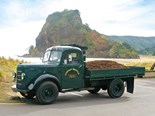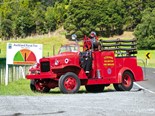Mitsubishi FH140 restoration part 1
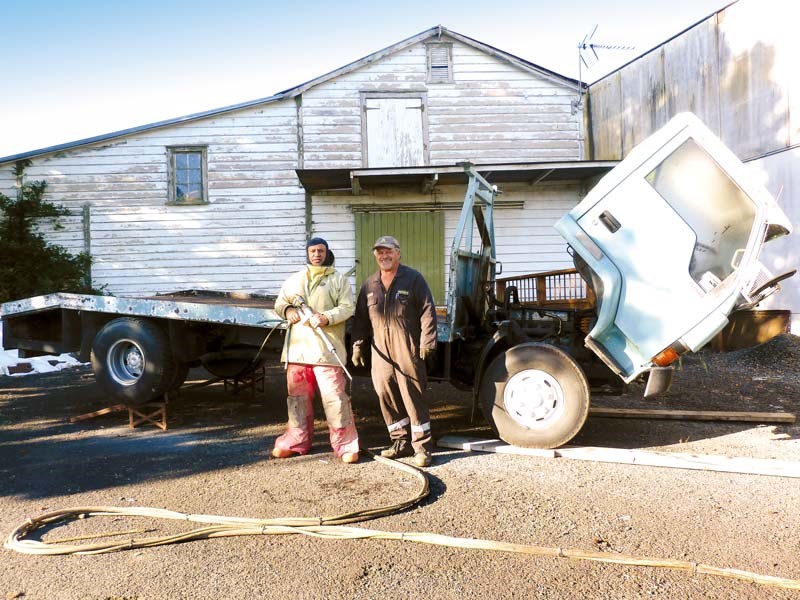 Terrence Campbell and Johnny Stephenson from Aquamax
Terrence Campbell and Johnny Stephenson from Aquamax


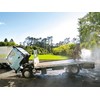
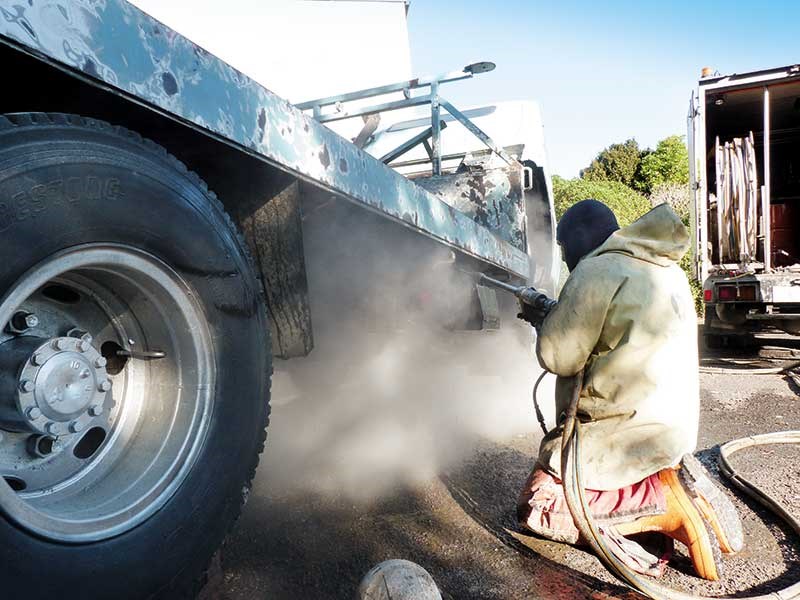


|
|
Terrence Campbell and Johnny Stephenson from Aquamax
|

|

|
I’m into the first day of the Mitsubishi restoration and I’m already starting to lose count of the number of times I’ve been asked the question: “why are you bothering to restore a truck that’s only 25 years old?”
While on the surface that may very-well appear to be a valid question, I chuckle to myself when I recall the comments an unnamed magazine editor made a year or so back when I announced to him that I was about to embark on a restoration job on my 1953 K Bedford.
In fact, it was the same editor that actually had the temerity to want to title the series of Bedford articles ‘Why would you bother?’ – cheeky bugger!
All ribbing aside, I can see why people these days don’t, as a general rule, look at a vehicle that was built in the 1990s and see is as being inordinately old.
It’s funny because I can recall buying the above-mentioned 1953 Bedford back in 1979 when it was 26 years old and people were actually congratulating me for saving a "quaint old truck" from the scrap heap.
On another occasion in 1978, people thought I was nuts when I bought a 10-year-old TK Bedford to start up an Auckland to Hamilton run.
Strangely enough, it was just a couple of weeks ago that I drove an almost 10-year-old Hino rental truck to Taupo and back with it feeling like I was driving a nearly new truck.
I’ve tried to analyse this ‘age of vehicles’ thing, and all I can come up with is that it’s either my current age relative to the age of the vehicle or it’s simply that there hasn’t been an awful lot of change in vehicle manufacturing over the last quarter of a century.
In any event, I’ll leave it to the 99.99 percent of you who are smarter than I am, to figure it out.
Anyhow, here I am trying to get my head around a job that’s going to be very different from my two previous forays into the world of vehicle restoration.
I’m getting the feeling that the major difference with this job is that the truck has to remain driveable and presentable throughout the majority of the restoration process.
All right, it’s not going to matter too much if there a few days here and there that it can’t be used, but in practical terms it has to remain roadworthy (and to a large extent – presentable) for the next three months or so.
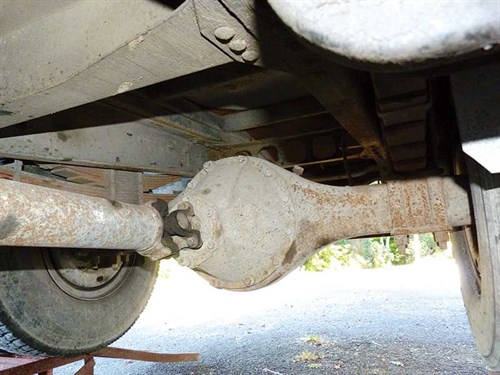
One of the first decisions to be made was how I was going to deal to approximately 20 square metres of a light coating of surface rust on the vehicle.
The truck had obviously spent a good portion of its commercial life as part of a road working team and had most likely endured many hours and kilometres in an environment where lime splashes were a daily event.
Having made that comment, the machine must have received a good old wash down after each shift, as the only rust to be found on the vehicle was a light coating of surface rust that had the appearance of being able to be remedied fairly easily.
The colour of the paintwork, I guess, is a bit of a giveaway as to which company had owned the truck for the majority of its life, and I’d say that it’s testimony to this firm’s service regime that the truck is still as good as it is.
After giving the Mitsi the once-over, I had to decide how I was going to tackle the rust removal job and I quickly realised that there were several possible options at hand.
My first option was to do it the mean man’s way and endure up to a week of wire brushing, both by manual and mechanical methods, but given that that was going to involve spending much of the time (probably up to a week) on the underside, receiving a liberal coating of dust on my aging body in the process, I rapidly backed away from that option.
I considered two other options which I felt would be more palatable to my ever-increasing adversity to physical effort, but conversely would have a negative effect on my ever-decreasing bank balance.
It was plain to see that grit blasting or high pressure water blasting would get the job done in a shorter timeframe, so I decided to sleep on it and make a final decision in the morning.
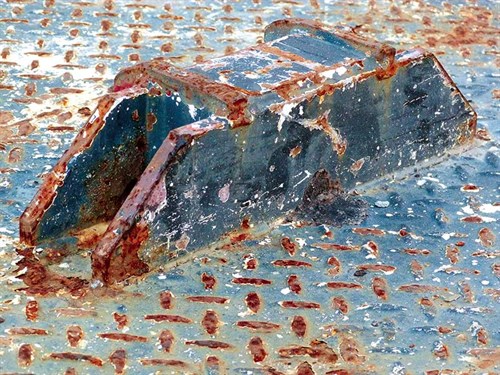
I learnt a lot about my personality that night when I was agonising over this business of inverse proportionality between input of physical effort and output of funds-on-hand.
I came to the conclusion that essentially I’m really a lazy little so-and-so and I was able to kick option number one into touch almost immediately.
Once I’d figured out the psychology behind the decision, it was plain sailing and I settled on the water jetting option, figuring that I could get the guys from Aquamax on to the job one morning, blow the excess water off in the afternoon and get a coat of etch primer on before darkness fell.
I placed my order for the Aquamax team to be on site early the following Thursday and quickly got to work removing a fairly hefty bit of steel which was only about the size of a brick, which was welded to the middle of the deck.
I could never figure exactly what the original purpose of the bracket was, as it was just a solid block of steel with no anchor points or holes – I could only assume that it must have formed a part of some securing device for a specific piece of roading machinery.
From my point of view, it was merely a waste of space which was in the way every time I tried to slide a ramp underneath a machine being carried on the deck, so off it came!
In fact, I’ve since removed a number of ancillary brackets and other associated road-building paraphernalia, much of which is going to be recycled on the next restoration job – one of those weird-looking 1960’s FGK 30 Morris trucks.
It’s interesting to note that the brick-sized bracket used up 15 discs during the removal process and I know of a certain abrasives manufacturer who is out there placing and order for a new yacht or pleasure craft on the basis of all the cutting and grinding discs he’s going to sell over the next few months as this restoration is completed.
For the latest news and reviews, subscribe to Deals On Wheels magazine here.
Keep up to date in the industry by signing up to Deals on Wheels' free newsletter or liking us on Facebook.











